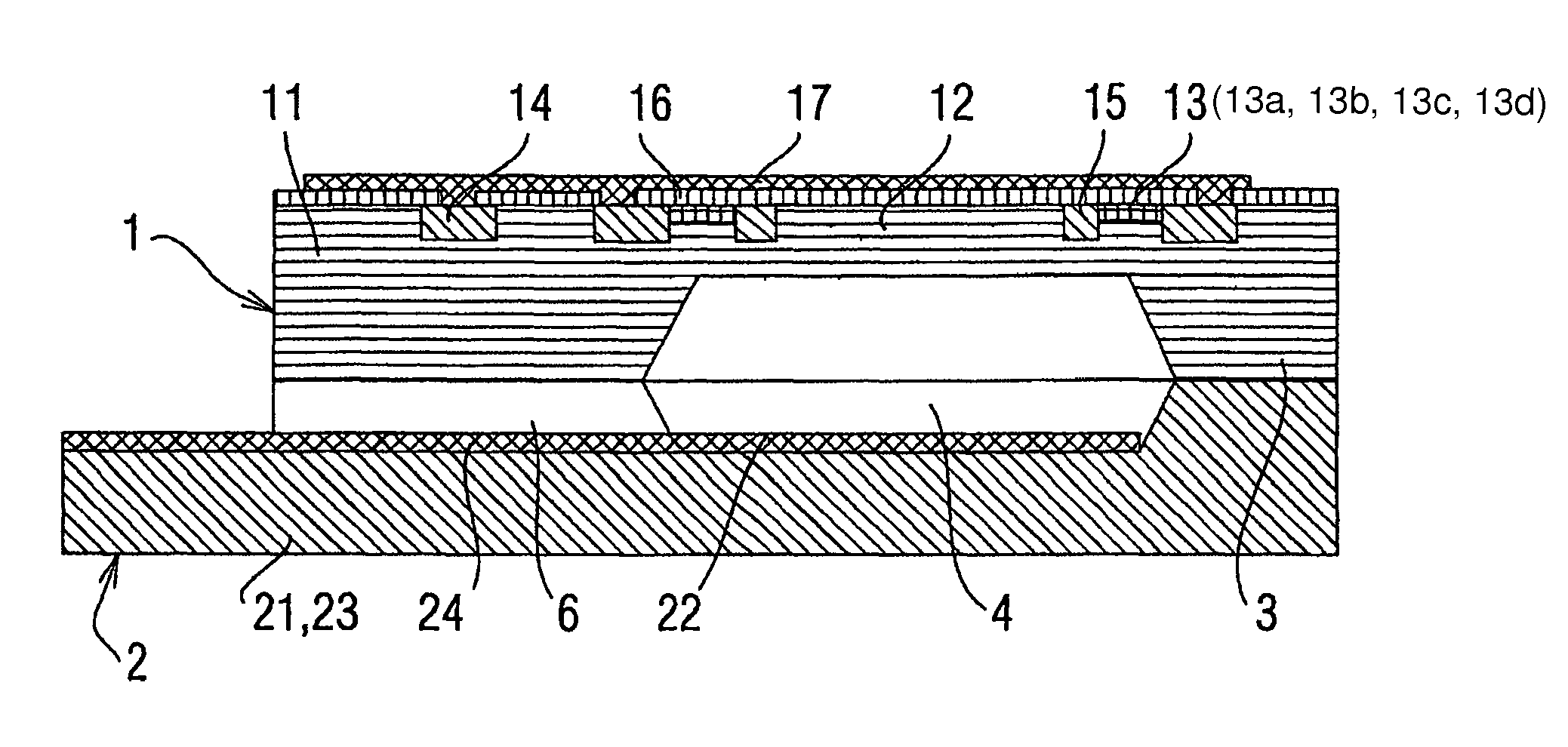Self-calibrating pressure sensor
a self-calibrating, pressure sensor technology, applied in the field of pressure sensors, can solve the problems of actual optical fibers, difficulties in post-operative hemodynamic management, and still exhibit drawbacks of techniques, and achieve the effect of convenient and reliable implementation, easy correction, and instantaneous
- Summary
- Abstract
- Description
- Claims
- Application Information
AI Technical Summary
Benefits of technology
Problems solved by technology
Method used
Image
Examples
example 1
Relative Sensor Combined with a Metal Electrode Actuator
[0050]With reference to FIG. 1, the device according to this example comprises the pressure sensor 1, which comprises, on the one hand, the test body 11, and, on the other hand, the polarization contact 14. The test body 11 has a segment of smaller thickness that constitutes the membrane 12, able to deform under the action of the pressure from the medium or from an electrostatic force. The test body 11 of the sensor 1, including the membrane 12, is made of conductive silicon.
[0051]Said membrane is equipped with four piezoelectric transducers 13, able to translate a mechanical stress into an electrical signal. The transducers 13 that are selected are piezoresistive gauges that are placed in zones of greater deformation of the membrane 12. Four gauges that are mounted on a Wheatstone bridge are used. They are integrated into the silicon membrane 12 by targeted doping of the zones where the deformations are at maximum, i.e., on ea...
example 2
Absolute Sensor Combined with a Conductive Silicon Actuator
[0066]With reference to FIG. 2, the device according to this example comprises the pressure sensor 1, which comprises, on the one hand, the test body 11, and, on the other hand, the polarization contact 14. The test body 11 has a segment of smaller thickness that constitutes the membrane 12, able to deform under the action of the pressure of the medium. The test body 11 of the sensor 1, including the membrane 12, is made of conductive silicon.
[0067]Said membrane is equipped with four piezoelectric transducers 13, able to translate a mechanical stress into an electrical signal. The transducers 13 that are selected are piezoresistive gauges that are placed in zones of greater deformation of the membrane 12. Four gauges are integrated into the silicon membrane 12 by targeted doping of the zones where the deformations are at maximum, i.e., on each of the sides on the periphery of the membrane 12. P++ interconnections 15 are prov...
PUM
 Login to view more
Login to view more Abstract
Description
Claims
Application Information
 Login to view more
Login to view more - R&D Engineer
- R&D Manager
- IP Professional
- Industry Leading Data Capabilities
- Powerful AI technology
- Patent DNA Extraction
Browse by: Latest US Patents, China's latest patents, Technical Efficacy Thesaurus, Application Domain, Technology Topic.
© 2024 PatSnap. All rights reserved.Legal|Privacy policy|Modern Slavery Act Transparency Statement|Sitemap



